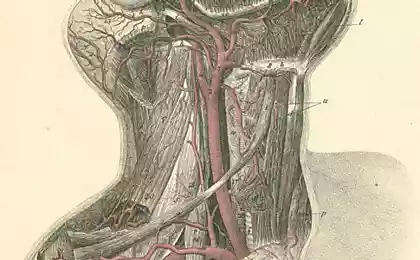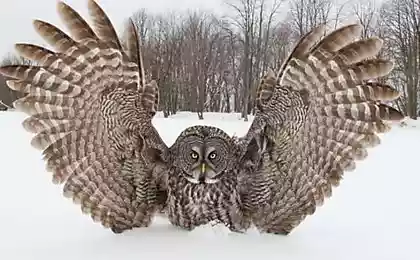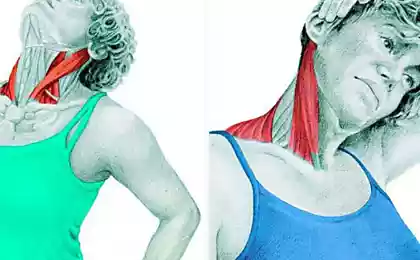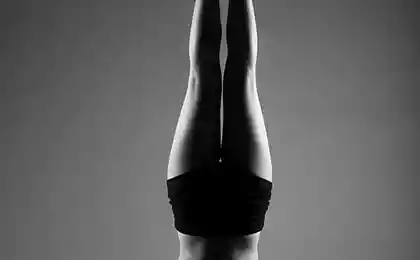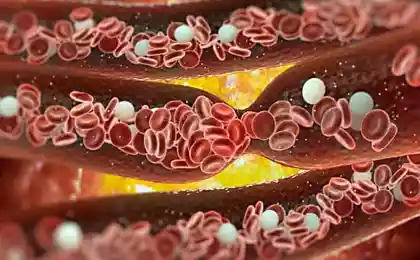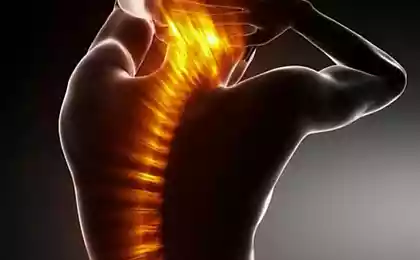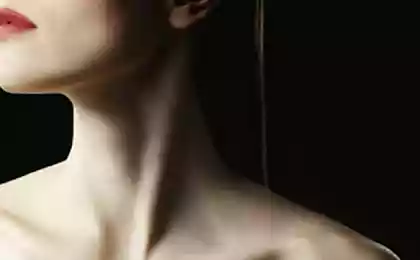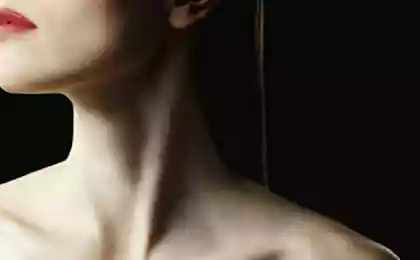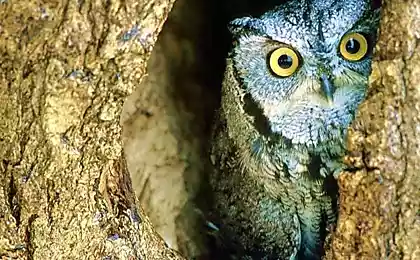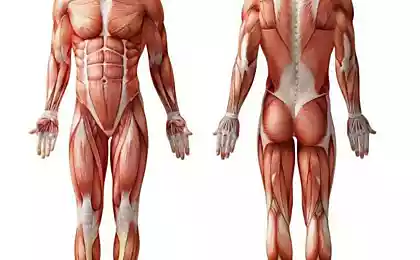760
How owls can turn their heads
Owls don't need eyes in the back of my head to see what is happening from behind, they can just turn your head. It is known that many species of owls, such as a barred owl, able to turn their heads 270 degrees in either direction, and this means that they can look to the left, turning your head to the right, or Vice versa.
But how they manage not to tear artery and not to block the flow of blood to the brain? The answer to this question came from a graphic designer and a doctor from Johns Hopkins University.
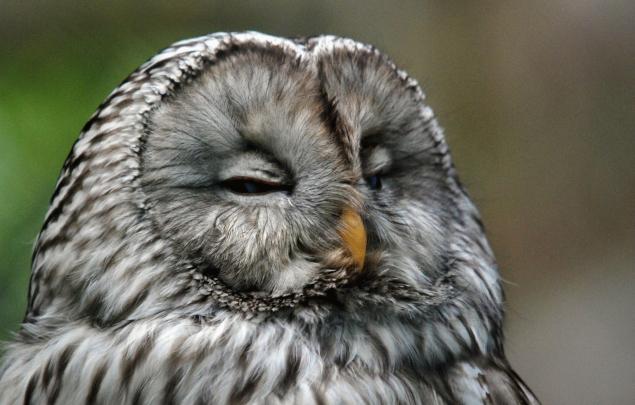
"Experts on neuroimaging like me that are problems in people caused by damage to the arteries of the head and neck, have long wondered why the fast and twisting movements of the head do not force thousands of owls to fall dead on the forest floor," says study author Dr. Philip Giraud.
If people tried as quickly or strongly to turn his head, would break the network of arteries, which in result would lead to acute violation of cerebral circulation, and also to the broken neck. "The carotid and vertebral arteries in the neck of most animals-including owls and humans, very delicate and easily succumb to any damages", adds the scientist.
To look at blood vessels owls when you turn your head, the researchers injected a dye into the arteries of a dozen dead white owls, mottled owls and virgin owls and used a CT scanner to visualize how the fluid is distributed through the vessels of birds. After creating scanned images, the researchers introduced a plastic like substance into the veins of birds, and then cut the fabric and drew a diagram and location of the vessels.
Scientists have discovered a number of previously unknown and unique properties. First, the bones of the neck of the owl, i.e. the vertebrae, contain holes that are much greater than those that can be seen in other birds or humans. We have openings in the vertebrae are nearly the same size as the artery, but in owls they are 10 times wider than vessels. These holes, or channels, obviously, contain air bags that are designed to mitigate the sharp twisting movements of the head.
"We also immediately saw that such channels are not in the bottom two cervical vertebrae," the researchers note. This allows like cord vessels some sagging at the time of rotation of the head.
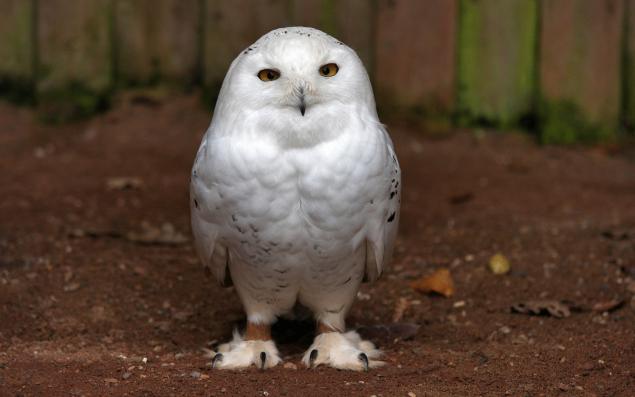
Large holes and weak tension in the lower part of the neck make it clear why do not break the vessels. But they do not explain what not interrupted the flow of blood when the owl turns his head. But the twists and turns that angle just have to cause at least partial blocking of the arteries.
Scientists noticed that when approaching the head of the vertebral artery is slightly expanded, which is unusual and never to be found among many other animals (vessels according to the type of tree trunk becoming thinner with distance from the heart). The authors think that these enlarged areas may function as reservoirs that hold the blood, but because of the brain appears some stock at the time of movement of the head.
In addition, blood vessels in the brain are closely connected. Vessel called the trigeminal artery connects the front and back part of the brain of an owl, which allows to ensure on maximum volumes of blood.
So why owls can turn their heads from this angle? The fact that they have tubular eyes, their structure is very similar to a telescope, thanks to which birds have amazing vision. But unlike people whose eyes are almost spherical in shape, owls barely can move, and therefore forced to turn his head.
This study once again demonstrates perfectly how birds are adapted to their environment, because they can see all around, despite the fixed eyes. Scientists hope that the study will make people even more appreciative of the life on our planet.

Source: /users/104
But how they manage not to tear artery and not to block the flow of blood to the brain? The answer to this question came from a graphic designer and a doctor from Johns Hopkins University.

"Experts on neuroimaging like me that are problems in people caused by damage to the arteries of the head and neck, have long wondered why the fast and twisting movements of the head do not force thousands of owls to fall dead on the forest floor," says study author Dr. Philip Giraud.
If people tried as quickly or strongly to turn his head, would break the network of arteries, which in result would lead to acute violation of cerebral circulation, and also to the broken neck. "The carotid and vertebral arteries in the neck of most animals-including owls and humans, very delicate and easily succumb to any damages", adds the scientist.
To look at blood vessels owls when you turn your head, the researchers injected a dye into the arteries of a dozen dead white owls, mottled owls and virgin owls and used a CT scanner to visualize how the fluid is distributed through the vessels of birds. After creating scanned images, the researchers introduced a plastic like substance into the veins of birds, and then cut the fabric and drew a diagram and location of the vessels.
Scientists have discovered a number of previously unknown and unique properties. First, the bones of the neck of the owl, i.e. the vertebrae, contain holes that are much greater than those that can be seen in other birds or humans. We have openings in the vertebrae are nearly the same size as the artery, but in owls they are 10 times wider than vessels. These holes, or channels, obviously, contain air bags that are designed to mitigate the sharp twisting movements of the head.
"We also immediately saw that such channels are not in the bottom two cervical vertebrae," the researchers note. This allows like cord vessels some sagging at the time of rotation of the head.

Large holes and weak tension in the lower part of the neck make it clear why do not break the vessels. But they do not explain what not interrupted the flow of blood when the owl turns his head. But the twists and turns that angle just have to cause at least partial blocking of the arteries.
Scientists noticed that when approaching the head of the vertebral artery is slightly expanded, which is unusual and never to be found among many other animals (vessels according to the type of tree trunk becoming thinner with distance from the heart). The authors think that these enlarged areas may function as reservoirs that hold the blood, but because of the brain appears some stock at the time of movement of the head.
In addition, blood vessels in the brain are closely connected. Vessel called the trigeminal artery connects the front and back part of the brain of an owl, which allows to ensure on maximum volumes of blood.
So why owls can turn their heads from this angle? The fact that they have tubular eyes, their structure is very similar to a telescope, thanks to which birds have amazing vision. But unlike people whose eyes are almost spherical in shape, owls barely can move, and therefore forced to turn his head.
This study once again demonstrates perfectly how birds are adapted to their environment, because they can see all around, despite the fixed eyes. Scientists hope that the study will make people even more appreciative of the life on our planet.

Source: /users/104

